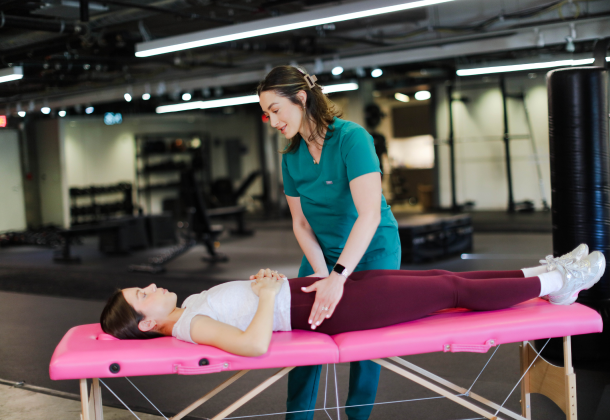
Prolapse is when your rectum, uterus, or bladder bulge into your vaginal wall due to weakened
pelvic floor muscles. This can happen when the muscles and connective tissues supporting
these organs become inadequate. You might feel or even see this bulge, and it can lead to a
range of symptoms.

Do you find yourself wondering about the best pelvic floor exercise? Kegels, squats, deep belly breathing—there are many options out there, but the truth might just surprise you.
Believe it or not, the best pelvic floor exercise isn’t just one exercise. Like any other muscle in your body, your pelvic floor craves a variety of movements to thrive. You need strength, mobility, the ability to absorb force, and impeccable control and coordination.
But here’s the catch: what works for one person may not work for another. That’s why a personalized approach is key.

Stress Urinary Incontinence (SUI) is a prevalent medical condition that affects millions of people worldwide. Despite its prevalence, it remains an often unspoken topic due to embarrassment and stigma. However, it is crucial to shed light on SUI, as understanding the symptoms and available treatments can significantly improve the quality of life for those affected. In this post, we will delve into the symptoms of SUI, how to identify if you have it, and explore various treatment tips to help you regain control and confidence.

Picture this: You’ve been having some pelvic health issues and when you talk to someone about it, you’re told to “do kegels.” But you’ve been doing kegels since you learned about them in high school, and you’re STILL having issues. Frustrating, right? It’s a common story among women. But here’s the truth: relying solely on kegels won’t solve all your pelvic health issues. Let’s dive deeper into this and uncover the real solutions.

The pelvic floor is a group of muscles, nerves, ligaments, and blood supply that support the diaphragm and pelvic organs, including the bladder, uterus, and rectum. They play a crucial role in maintaining healthy bladder and bowel habits, sexual function, and overall stability of the pelvis. However, when the pelvic floor muscles don’t work properly, they can lead to a range of issues, such as urinary or fecal incontinence, painful sex, and pelvic organ prolapse. In this post, we’ll explore the functions of the pelvic floor muscles and what you can do to keep them healthy.

Featured Blog Welcome To Pelvic Floor Physical Therapy Right Are you tired of suffering in silence from pelvic floor issues? You’re not alone! Pelvic floor physical therapy is a specialized field that can help you overcome a variety of problems and even prevent them from happening in the first place. But what exactly is it, […]

Featured Blog Who Should Go To Pelvic PTRight Pelvic floor physical therapy is a specialized type of physical therapy that focuses on the muscles, ligaments, and tissues that support the pelvic organs. This includes the bladder, uterus, prostate, and rectum. The pelvic floor muscles play a critical role in bowel and bladder control, sexual function, […]

Featured Blog What to Expect At Your First Pelvic PT Are you considering pelvic floor physical therapy but feeling nervous about your first visit? Don’t worry, we’ve got you covered! In this blog post, we’ll walk you through what to expect during your first visit to pelvic floor physical therapy. Your first visit will likely […]








